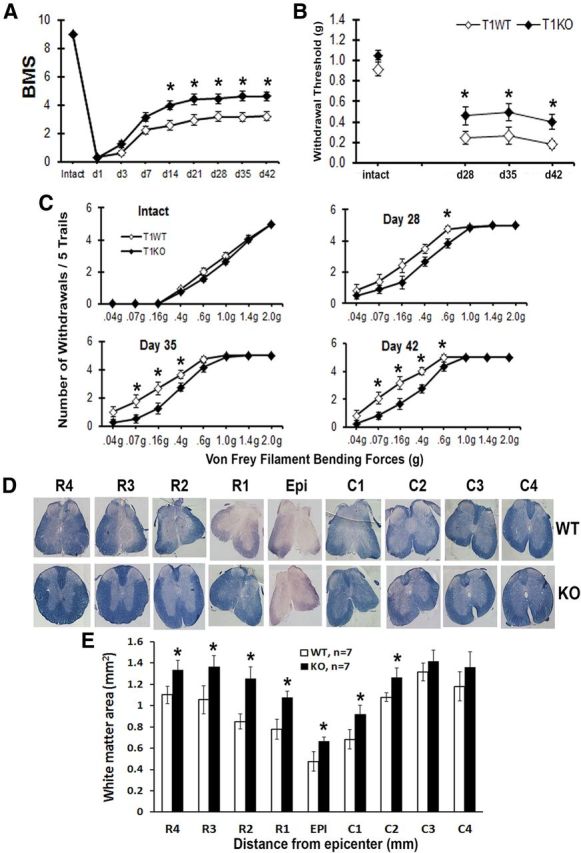Figure 2.

Gene deletion of trkB.T1 results in improved locomotor functional recovery and decreased mechanical hyperesthesia after SCI. A, BMS scores in trkB.T1−/− mice (♦; n = 15) were significantly higher than in trkB.T1+/+ mice (◊; n = 15) starting at day 14 after SCI (p < 0.05, two-way ANOVA with repeated measures). B, TrkB.T1−/− mice (♦; n = 12) had significantly less post-SCI mechanical hyperesthesia than trkB.T1+/+ mice (◊; n = 12, p < 0.05, Mann–Whitney U test). C, Hindpaw mechanical withdrawal stimulus-response curves in intact naive mice and after SCI demonstrate that, after injury, the trkB.T1+/+ mice (◊; n = 12) withdrew their paws from the mechanical stimuli more frequently than the trkB.T1−/− mice (♦; n = 12, p < 0.05, one-tailed Student's t test). D, A series of representative ECRC-stained tissue sections from trkB.T1+/+ and trkB.T1−/− mice at the epicenter (Epi) and rostral (R1–R4) and caudal (C1–C4) to the injury. ECRC stains myelinated areas of spared WM. E, Quantification of the total WM area (mm2) in stained tissue sections showed a significant increase in the WM area of trkB.T1−/− mice (n = 7) compared with trkB.T1+/+ (n = 7, p < 0.05, one-tailed Student's t test vs trkB.T1+/+ mice). Data are expressed as mean ± SEM.
